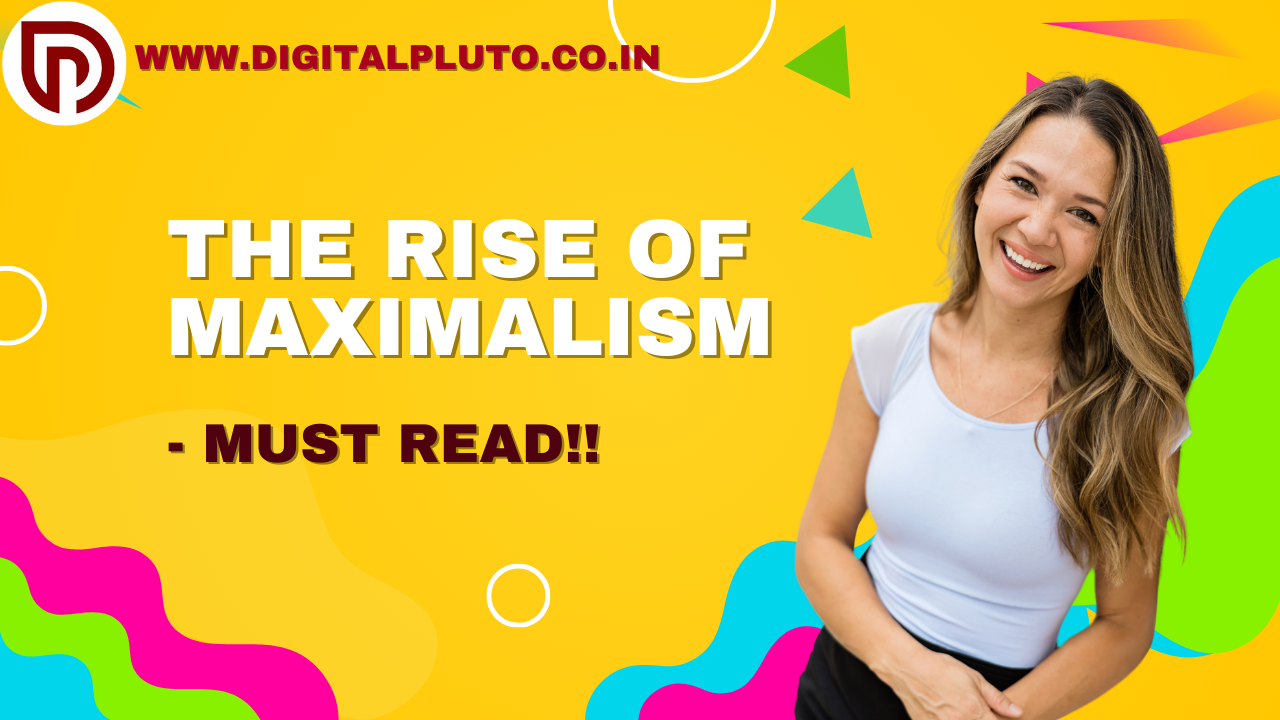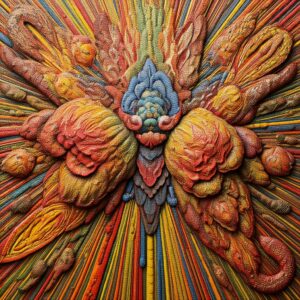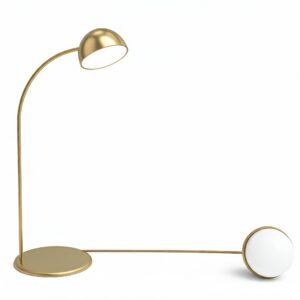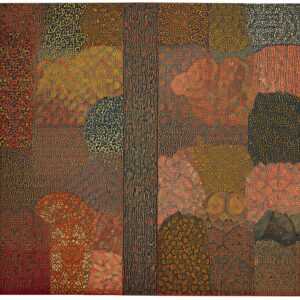
The Pendulum Swing: From Minimalism to Maximalism

The sleek, neutral colors and simple forms of minimalism have dominated the design world for almost ten years. Both designers and influencers gravitated toward this minimalist style, adopting the “less is more” mentality. But now that the pendulum has swung the other way, maximalism—a daring, vibrant, and unrepentant design movement that is rapidly gaining traction—has emerged. Let’s see complete information in this blog, The Rise of Maximalism.
The newest and possibly most divisive style to appeal to our generation is maximalism, which is the opposite of minimalism. Maximalism enjoys the plethora of items, patterns, and textures, whereas minimalism aims to simplify and declutter. In addition to promoting the purchase of additional “things,” this tendency explicitly praises it, undermining the fundamental tenets of the minimalist movement.
We must first examine the historical background of maximalism in order to comprehend the significance of this change. This design idea is not new; in fact, it has existed for millennia in a variety of forms. Maximalism has long been a symbol of wealth, rank, and cultural expression, dating back to the lavish Baroque period of 17th-century Europe and the colorful Art Deco of the Roaring Twenties.
What is Minimalism?

Minimalism is a lifestyle and design philosophy that emphasizes simplicity, intentionality, and focusing on what truly matters by eliminating excess. Originally rooted in art and architecture, minimalism has spread into many areas, from interior design to personal finance and even digital spaces.
Clean lines, muted color palettes, and open areas are common features of minimalist design. Imagine a space that has only the necessities: a few pieces of useful furniture and clear surfaces. However, lifestyle minimalism extends beyond aesthetics. It is about clearing out things that do not bring true value, like extraneous belongings, obligations, and routines, the rise of maximalism.
What is maximalism?

The Roots of Maximalism
The Baroque period in the 17th century was distinguished by its opulent, elaborate, and highly ornamental style. By amassing ornate furniture, extravagant wall tapestries, and gaudy chandeliers, the European aristocracy aimed to demonstrate their wealth and influence. The maximalist concept was founded on this colonial mentality, which held that the more one owned, the more one was.
Maximalism reappeared in the Roaring Twenties, centuries later, with an emphasis on commemorating the post-war economic prosperity. In an attempt to demonstrate their affluence and survival during the turbulent World War I era, Americans, flush with newfound cash, lavished themselves on the newest technological advancements, opulent architecture, and lavish décor.
However, maximalism’s most recent incarnation dates back to the 1960s and 1970s. The maximalist aesthetic evolved throughout this time, moving away from simple material excess and toward a more deliberate, joyful style. Artists and designers aimed to produce spaces that were profoundly rooted in the human experience, emotionally nourishing, and visually captivating.
The Modern Maximalist Resurgence
Although craftsmanship, intentionality, and cultural relevance were frequently the foundations of previous maximalist trends, the present version of the style has drawn criticism. Known as “Clutter-core,” the contemporary maximalist movement has come under fire for allegedly lacking the nuance and significance of its forebears and placing more emphasis on the collection of inexpensive, mass-produced goods than on craftsmanship and narrative.
The Future Proof channel’s buddy, designer Nick Lewis, asserts that “drama and generating emotions through strong colors, dramatic patterns, and rich textures” should be at the heart of maximalism. But many of the objects and décor pieces in the current maximalist style lack the craftsmanship and design expertise that defined previous maximalist movements; therefore, it frequently falls short.
What, therefore, has caused maximalism to resurface in the twenty-first century? It appears that the special circumstances of the last several years hold the answer. A major factor in the move away from minimalism and toward a more colorful, comfortable, and visually exciting design was the COVID-19 pandemic, which compelled many of us to spend a lot of time at home.
Our want for more warmth, joy, and tactile reminders intensified as we were forced to live in our sterile, minimalist living quarters. Younger generations’ economic hardships and the epidemic conspired to create the ideal environment for maximalism’s ascent. People no longer wanted to maximize their lives and belongings; instead, they yearned for a sense.
The Maximalist Paradox: Consumerism and Authenticity
Nonetheless, there are certain inconsistencies in this contemporary maximalist movement. Although it is reasonable to want a more aesthetically pleasing and emotionally impactful living environment, the actual design frequently falls short of the maximalist standards of the past. The modern maximalist environment is dominated by mass-produced, inexpensive, and frequently meaningless products rather than handcrafted, carefully chosen objects that tell a story.
This problem has been made worse by the growth of e-commerce and the convenience of internet shopping. Anything from resin bulldog piggy banks to disco cowgirl art prints may be found by simply searching for “maximalist décor” on Amazon or other online merchants. Despite their outward appeal, these items lack the nuance and artistry that characterized the rise of maximalism trends.
The maximalist movement may be interpreted as a last-ditch effort to re-establish a connection with the real world in an increasingly digital society. The pandemic’s unexpected surge in popularity of tactile pastimes like baking sourdough bread points to a deep-seated desire for real-world experiences and reminders of our humanity. But as it stands, the maximalist movement frequently fails to achieve this objective, instead feeding a vicious circle of waste and overconsumption.
The Future of Maximalism: Balancing Excess and Authenticity
Finding a balance between the desire for authenticity and the appeal of excess will be essential for designers, producers, and consumers as the maximalist movement develops. Maximalism’s audacious, vibrant, and unrepentant style can be visually arresting, but it needs to be based on a more profound comprehension of craftsmanship, design, and the narratives that objects can convey of the rise of maximalism.
Perhaps a more deliberate and considerate approach that values the handcrafted, the distinctive, and the significant is where maximalism is headed. We can design living areas that are not only aesthetically pleasing but also profoundly nourishing to the spirit by adopting the maximalist aesthetic while also placing a high value on quality, sustainability, and individual expression.






